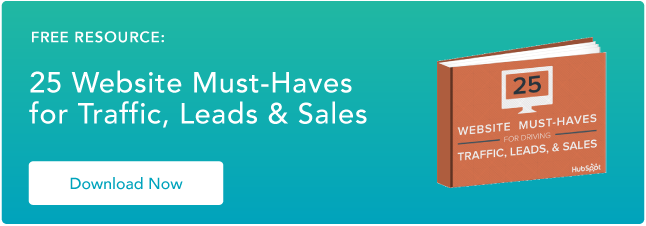 Ever gone into your analytics and seen your bounce rate hovering around or above 90%? If so, you’re in trouble. That is a high bounce rate. And it’s very, very bad.
Ever gone into your analytics and seen your bounce rate hovering around or above 90%? If so, you’re in trouble. That is a high bounce rate. And it’s very, very bad.
Bounce rates are website killers. The problem is, many webmasters simply expect bounce rates to stay at high levels. I’m convinced it doesn’t have to be this way. You can bring your bounce rate down as long as you know what to do.
I’m tired of reading the same hackneyed information about “reducing your bounce rate,” so I decided to stop looking for the advice that doesn’t exist and create some of my own — a list of not stupid ways to crush your bounce rate.
5 Quick Facts About Bounce Rate
First, let’s just run through a few quick facts about bounce rate to make sure we’re all on the same page about what it is.
- Definition: Bounce rate is the number of visitors who left your site without visiting any other pages on the site. Google, ever so careful about metrical nuances, puts it this way: “Bounce Rate is the percentage of single-page visits (i.e. visits in which the person left your site from the entrance page without interacting with the page).”
- A high bounce rate is bad. You will not be able to win any arguments with me on this one. A high bounce rate is a very bad thing, and it causes other bad things to happen, too. If your bounce rate is high, it may have a negative impact on your rankings.
- Some bounce is inevitable. You’re not going to eliminate all bounce. Accept some of it as human fate — the destiny of the web.
- Bounce rate is not exit rate (but it’s related). Exit rate is the percentage of visitors who left the site from a certain page. Don’t confuse the two.
- Reducing bounce rate is site-specific. There’s no such thing as a set of rules that is guaranteed to reduce your bounce rate. My article is tactical, but I’m not giving you a list of design techniques or wonder-hacks that will automatically slash bounce rates. I’m giving you strategic ammunition that you have to load and fire.
So far, we’re in SEO kindergarten still. This is just preparation for the solid and strategic advice that I want to share with you in the next section.
How to Crush Your Bounce Rate
Let’s nail it. How do you crush your bounce rate? Follow these steps, and I guarantee that your bounce rate will begin to fall.
1) Know who’s visiting your site.
Here’s the big problem about the conventional pabulum on bounce rate reduction: It doesn’t get at the root problem. Immediately, such advice launches into tips like redesign your website! Or add more pictures! Those are not true bounce rate solutions, though.
You want pictures? This website has them, but you can bet I’m going to bounce as soon as possible.

Such design advice doesn’t cut it. You need a more fundamental approach to crushing your bounce rate. You need to know your visitor.
To find out who’s visiting your site and what kind of content they like, check out your analytics. Take a look at how many of your visitors are new vs. returning, for example. That single data point alone helps you understand how to structure your page, what type of messages to put in place, and how to create your copy. Knowing what language your users read, their demographics, and what they’re interested in is also incredibly important.
Understand your audience before you change anything. Know what language they speak, where they live, what they search for, and why they visit your site. You won’t be able to take any real bounce-rate crushing action unless you first understand your visitor.
2) Know what your visitors want.
Once you’ve gotten to know who your user is, you need to know what they want.
Attracting the right user to your website is all about targeting the right keywords. Ideally, you’ve done some keyword research and have identified the keywords that you need to be ranking for. You should already be ranking for branded keywords, and comprehensively covering other niche keywords.
Keep in mind that, depending on the nature of your site, your bounce rate may vary. Here is the information that I presented in my infographic guide to decreasing bounce rate. The chart below displays Google Analytics benchmark averages for bounce rate across different types of websites.

If you know exactly what your visitor wants and give it to them, then they have virtually no reason to bounce. The only way you’ll be able to do this is through successful content marketing.
3) Pour everything you’ve got in to UX.
By now, you’ve gotten two things straight:
- You need to know your visitor.
- You need to give them what they want.
By this point, you’re well on your way to getting rid of sky-high bounce rates. What else could possibly cause a visitor to bounce?
One of the main things is the site’s usability. User experience is everything. The user must feel comfortable, confident, and clear when they’re on your website.
This article isn’t a design tutorial, but let me give you a few specific points:
- Put the good stuff above the fold. If the user doesn’t see what they’re looking for above the fold, they are more likely to bounce. If your content is relevant to the user’s query, make that obvious by displaying it above the fold.
- Make your navigation intuitive. If the user wants to navigate — i.e., not bounce — make it easy. Place navigation where it’s expected, and make navigation choices obvious.
- Look professional. Good design is a marker of a good website. Savvy web users can distinguish a shoddy website from a professional one simply from a quick glance at the overall design. In a Search Engine Watch article, Nick Eubanks makes the point that “design has become a legitimacy signal.” In other words, poor design means that you look illegitimate or unprofessional in the eyes of your visitors. Their response is to bounce.
One of the strongest defenses against high bounce rate is to make a website so awesomely functional and beautiful that it makes people stay and click.
4) Make them click.
Just about everyone misses this one. We blather endlessly on about killer headlines, and the right keywords, and more pictures, and engaging design, and ad nauseum. But we forget to talk about this one thing: You’ve got to make them click.
In order to explain it to you, I’m going to circle back to Google’s definition of bounce rate:
A bounce happens when a visitor goes to your page, then leaves your page. That’s it. If the user is not clicking anywhere else on the page, the visit will most likely become a bounce.
Here’s the kicker. Your site could be so good that bounce rate goes higher. How the heck does that happen?
If you 1) know your user, and 2) give them what they want, and 3) have sick UX, then you could have successfully created a bounceable page. Why? It may very well be that you’ve created a page that is so successful that the user doesn’t need to go anywhere else. She has the information she needs, and she’s done. She bounces. Goodbye.
And so your bounce rate goes up, much to your chagrin.
So, here’s where real bounce rate reduction starts to happen. You’ve got to make the user click — to perform some action or some movement on the site. Let me explain how you can do this:
- Add conversion paths from every page on your website. Perhaps it is a blog subscription or a “read more,” or a CTA. Whatever the case, optimize every page for conversions. This is what I do on my personal website, with very high success.
- Make “hot” zones clickable. If there’s a place that people tend to hover over and it can be clickable, add a link it to make it clickable. I suggest using CrazyEgg to conduct heatmapping for this purpose.
A good page not only gives users the information they need, but it also asks them to act on that information. That action — compelled by a CTA — is going to involve a click.
The moment your visitor clicks, they are no longer part of the bounce rate statistic. That’s what you want.
5) Go beyond mobile friendly.
Here’s another point that everyone is missing: Mobile usability.
Designers and webmasters have been singing the praises of responsive design long enough. It’s a great song, and I appreciate all the responsive sites that are out there. If your site is not responsive, pardon my bluntness, but you just need to get with the program. Get responsive or you will die.
(End of rant.)
But a responsive site isn’t enough. Your site should be usable on a mobile device. I’ve seen plenty of great responsive sites that still don’t have mobile usability going for them. Though site isn’t trying to crush a 1,200 pixel width into a 300 pixel screen, it’s still not good enough. The site must be brilliantly intuitive and beautifully usable on a mobile device if you want to avoid mobile bounce rates.
If your website has mobile traffic — and I will be shocked to death if you don’t — then you need to think about more than just mobile friendliness. You need to think about mobile usability. Your mobile users are a growing segment of your traffic, and if they aren’t getting the site usability they need, they will bounce. And your bounce rate will reach those agonizing highs.
Conclusion
This has not been your typical reduce-your-bounce-rate post. This is more strategic, high-level, and hopefully helpful.
Don’t be content with industry average bounce rates. Defy the bounce rate benchmarks for the type of website you have. Even though there will always be some bounce rate, I think you can get it lower.
Here’s the great thing about reducing your bounce rate: Once you get your bounce rate lower, your conversion rate goes up. Your SEO goes up. Your CTR goes up. Your rankings go up. Bounce rate is a powerful metric — it actually shapes the way that a site ranks, because it’s one of the few user-dependent features of a website’s ranking. By reducing your bounce rate, you are paving the way for success in so many other areas.
What tips do you have for reducing your bounce rate?
![]()






